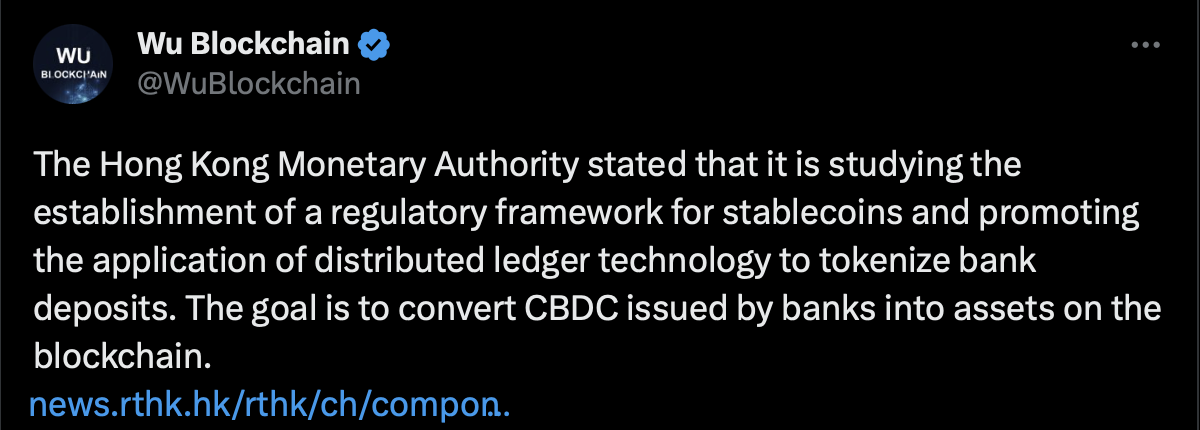According to a news article shared by Wu Blockchain, a China-based blockchain news source, the Hong Kong Monetary Authority has started working on creating a regulatory framework for stablecoins, which are cryptocurrencies pegged to fiat currencies. One of the main goals of these efforts is to advance in the field of Central Bank Digital Currencies (CBDC).
Ongoing Regulatory Uncertainty in the Crypto Ecosystem
With the wider adoption of blockchain technology in recent years, cryptocurrencies have gained significant popularity worldwide. The substantial increase in the market value of cryptocurrencies during this period has prompted financial regulatory institutions to take action in terms of legal regulations. While some countries, such as El Salvador, have embraced a more liberal approach to cryptocurrency regulations, others have adopted stricter regulations.
In the United States, the increasing regulatory uncertainty has led to tension between crypto companies and financial regulatory institutions. The Securities and Exchange Commission’s (SEC) lawsuit against Binance and Coinbase in June has further escalated this tension.
Meanwhile, according to local media reports, Hong Kong has taken a significant step in terms of regulations. The Hong Kong Monetary Authority has announced that it is working on crypto regulations, particularly in the areas of stablecoins, tokenization, and CBDC.
Hong Kong Accelerates Regulatory Efforts
Wu Blockchain, a China-based news source that covers developments in the blockchain and crypto ecosystem, shared the latest updates on the crypto regulations in Hong Kong. According to Wu Blockchain’s report, the Hong Kong Monetary Authority is focused on creating a regulatory framework for stablecoins and promoting the implementation of blockchain and distributed ledger technologies for tokenizing bank deposits.

Like many other countries, Hong Kong has intensified its efforts to establish a clear regulatory framework for the crypto ecosystem. Wu Blockchain reported that one of the main objectives of the regulator’s ongoing work is to make significant progress in the field of CBDC.

 Türkçe
Türkçe Español
Español










